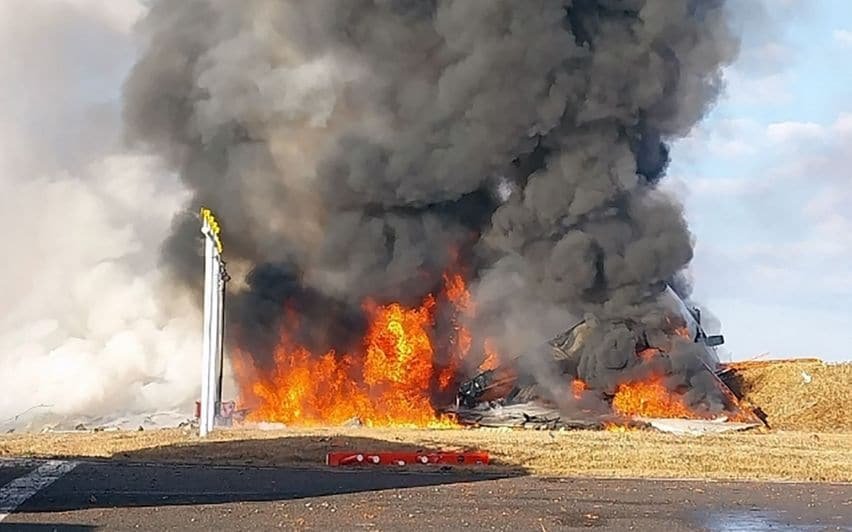The Jeju Air flight, returning from Thailand, was attempting a landing when it suffered a landing gear malfunction, possibly caused by a bird strike. The aircraft veered off the runway and exploded in flames. Rescue teams have confirmed that only two passengers and one crew member survived.
BY PC Burau
The tragic plane crash at Muan International Airport in South Korea, which is feared to have claimed the lives of 179 people, is believed to have been caused by a bird strike that led to a malfunction in the aircraft’s landing gear.
The incident involved Jeju Air flight 2216, a Boeing 737-800, which was returning from Bangkok, Thailand, when it encountered problems while attempting to land. According to Yonhap News Agency, the plane, carrying 175 passengers and six crew members, initially tried to land at around 8:30 AM local time. However, due to a suspected bird strike, the landing gear malfunctioned, preventing the aircraft from touching down safely. The pilots made a second attempt at landing but were unable to slow down the plane in time. As a result, the aircraft skidded across the runway in a belly landing before veering off course, crashing into a fence, and erupting in flames.
Heartbreaking news. My thoughts are with the families and loved ones of the victims. Such a tragic event.💔
The video of the JeJu Air Flight-7C2216 crash. pic.twitter.com/6vDAzpqaLQ
— S@lman Rizvi (@Rizvi00110) December 29, 2024
Witnesses reported that the plane’s tires remained inactive upon landing, further indicating that the landing gear had not been deployed properly. Emergency responders, who arrived at the scene, managed to rescue only two survivors, with all others feared to have perished in the crash.
The flight had initially attempted to land at 8:30 am local time, but the landing was unsuccessful. The plane circled the airport before attempting a second landing.
Visuals of the crash depict the aircraft dragging on its belly, indicating a failed landing gear deployment. A Yonhap report, citing airport authorities, suggests that the pilot attempted an emergency belly landing after a standard approach failed. Witness accounts point to a possible bird strike as the cause of the malfunction.
“Signs indicate that the landing gear, including the tires, did not activate, likely leading to the crash landing attempt,” the report stated, adding that adverse weather conditions may have worsened the situation.
The harrowing visuals showed the twin-engine aircraft approaching Muan without any visible landing gear, crashing into a wall at the airport’s outer edge and erupting into a massive fireball. Thick black smoke billowed into the sky as firefighters worked tirelessly to extinguish the flames. According to Yonhap, rescue teams managed to save three individuals—two passengers and a crew member—amid the chaos.
Lee Jeong-hyun, head of the Muan Fire Department, stated that while the exact cause remains under investigation, a bird strike or bad weather is suspected to have contributed to the crash.
Despite reports of clear skies at the airport, the disaster is raising questions among aviation experts. Geoffrey Thomas, editor of Airline News, described the situation as “perplexing” given the aircraft’s strong safety record and the favorable flying conditions. He also noted that the Boeing 737-800, one of the world’s most reliable aircraft, is widely used and known for its excellent maintenance standards in South Korea.
Investigation into whether the landing gear collapsed or failed to deploy will be a key focus for authorities as they work to understand how such a tragedy unfolded in seemingly perfect conditions.













